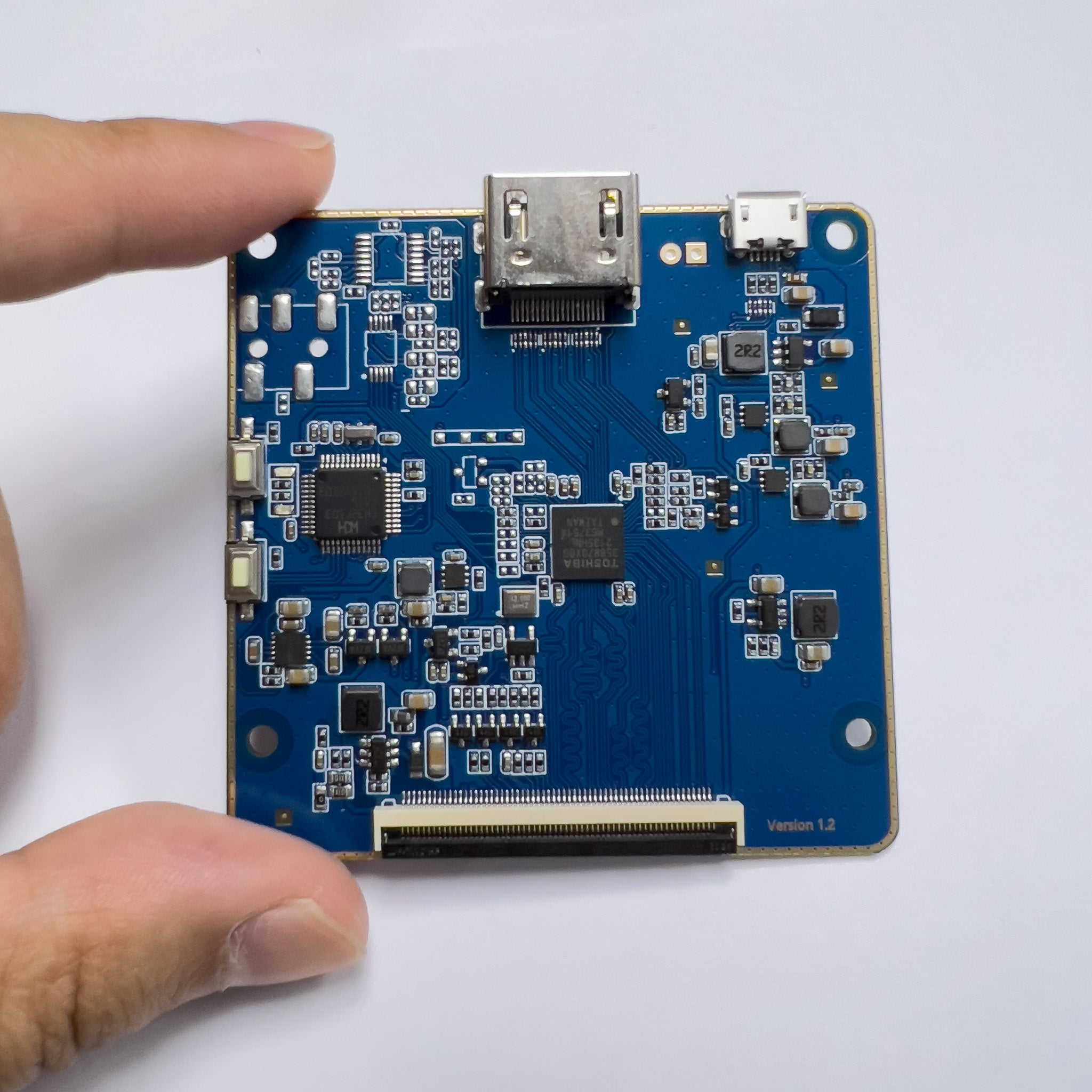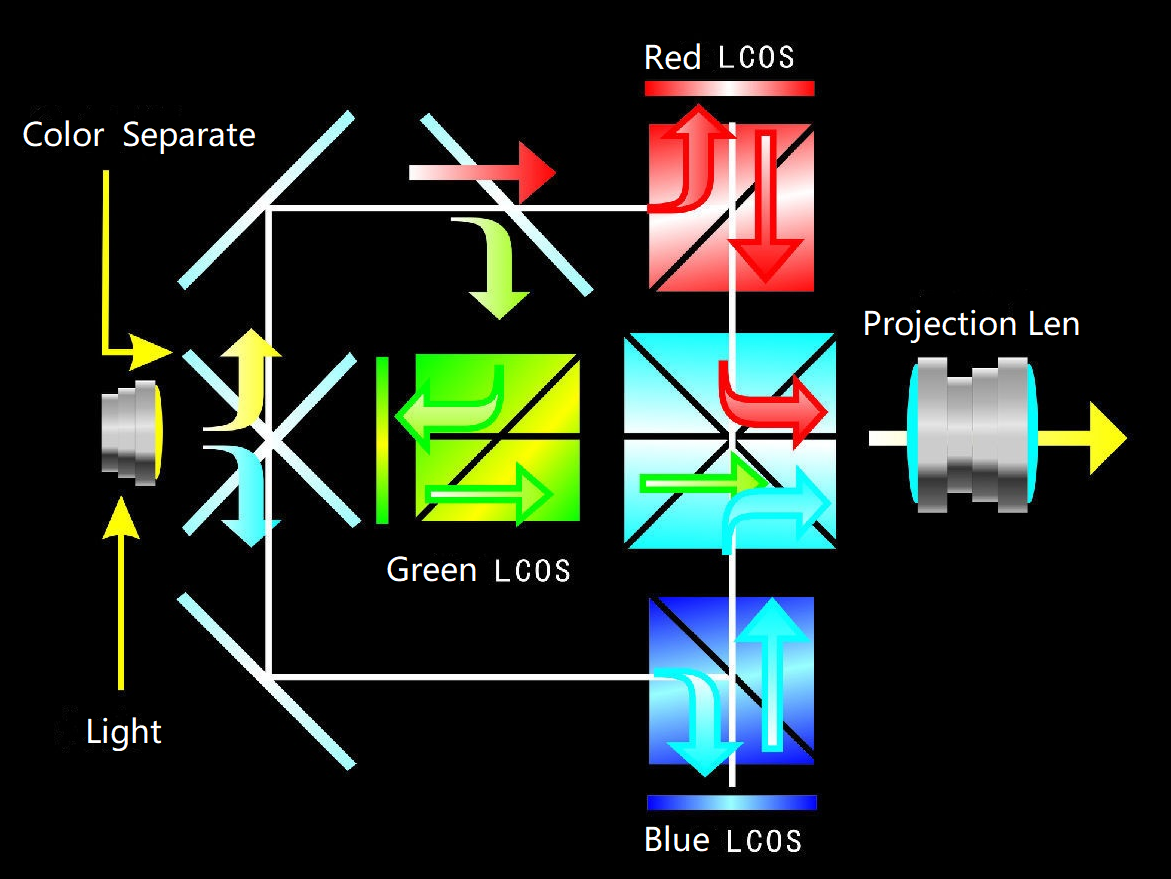OverView
LCOS display is a new reflective display technology based on the organic combination of LCD and CMOS integrated circuit. As a new display device, LCOS has many advantages such as large screen, high brightness, high resolution and power saving.LCOS chip construction
The LCOS chip structure is roughly the same as the LCD chip, also for the upper and lower substrate structure, and then the middle injection of liquid crystal; The difference is that the lower substrate of the LCOS is a CMOS substrate, unlike the LCD where both the upper and lower substrates are glass substrates.
CMOS substrate is on the silicon wafer, using the semiconductor process to make the driver panel, and then grinding technology, and finally plating aluminum as a mirror, forming a CMOS substrate.
The upper substrate is a glass substrate (ITO conductive glass) with a transparent electrode. The upper and lower plates are combined, and liquid crystal is injected in the middle to form LCOS, also known as: silicon-based liquid crystal.

- PCB: Transmit commands and currents from the MCU to the tiny device.
- CMOS :Use pixel driver data to control the liquid crystal,Typically one transistor is used for one pixel.
- Reflective coatings Layer: Reflections of light used to create images.
- Liquid crystal: Controls the amount of light that reaches or leaves the reflective coating, acting as a valve.
- Alignment layer: enables the liquid crystal to be correctly aligned, thus enabling precise alignment of the light.
- Transparent electrode: Together with silicon and liquid crystal make up the complete circuit
- Glass cover: Protects and seals the entire system.
- PBS(Polarization Beam Spliter) :Reflect light perpendicular to the plane of incidence (S-polarized) and pass light parallel to the plane of incidence (P-polarized).
Principle of imaging

After a series of electronic components, the light source is divided into red, green and blue by the color mirror, and then the polarized light is obtained through the PBS of the three colors, so that the light can enter the LCOS micro device, and then through the reflection of the LCOS micro device, the light is parallel through the PBS, and finally enters the prism, through which the separated three colors are combined, and finally projected to the screen for imaging.
Advantage
- The resolution and opening rate of LCOS are higher than that of LCD, and the resolution generally reaches SXGA level (1280×1024), and there is no obvious pixel rasterization as LCD screen. And because it is easy to form a thin line, so the picture is easy to achieve high resolution.
- The light source utilization rate of LCOS is also higher than that of LCD, LCOS is similar to DLP, and the light source utilization rate can reach 40%, while LCD is only 3~10%.
Disadvantage
- Liquid crystal layer and CMOS layer are very simple to make separately, but it is a very difficult manufacturing technology to fit each pixel corresponding to their texture. So most manufacturers have turned to cheaper, simpler LCD and DLP technology.
Read more

HDMI (High-Definition Multimedia Interface) and MIPI (Mobile Industry Processor Interface) are two distinct video interface standards. HDMI to MIPI adapters are designed to convert signals between ...

With the continuous development of technology, our quality of life has greatly improved. In this era of unlimited technological possibilities, the birth of planar waveguide technology has brought ...



Leave a comment
This site is protected by hCaptcha and the hCaptcha Privacy Policy and Terms of Service apply.